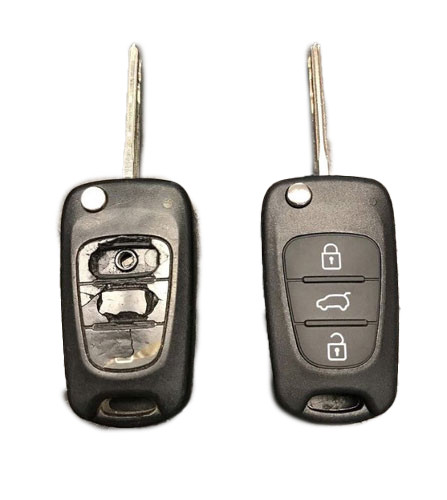What is a Key Cover?
A key cover, often referred to as a key shell or key case, is the outer part of your key. It houses the electronic board, chip, and battery but excludes the internal electronics themselves. If your key casing is damaged, there’s no need to replace the entire key – just changing the key cover can restore its durability and usability while saving you money.

When Do You Need a New Key Cover?
You might need a key cover replacement when:
- The buttons on your key become worn out or stop responding.
- The outer case cracks, exposing the internal electronics.
- The key mechanism no longer functions smoothly.
- You want to refresh the appearance of your key with a new, sturdy shell.
Instead of struggling with a faulty key, simply replace the cover and extend the lifespan of your original key!

How to Choose the Right Key Cover?
When selecting a replacement key cover, consider the following factors:
- Button Layout: Ensure that the number of buttons and their symbols match your existing key.
- Blade Shape: If your key includes an integrated blade, make sure the new shell accommodates it correctly.
- Quality: A good-quality key cover ensures a snug fit, smooth functionality, and long-lasting durability.
At MR-KEY, we offer a variety of key covers designed to match your specific car model perfectly, providing both aesthetics and functionality.
How to Change Your Key Cover?
Replacing your key cover is simple and doesn’t require professional assistance. Here’s how:
- Purchase a compatible key cover from our website.
- Open your old key case carefully.
- Transfer the electronic board and chip from your original key to the new key cover.
- Reassemble the key, ensuring all components fit securely.
- Test the buttons and functions to confirm everything is working properly.
For step-by-step guidance, we provide video tutorials on our website, showing you exactly how to change your key shell and even replace the battery if needed.
What Else Can You Change When Replacing the Key Cover?
While changing your key cover, it's the perfect time to:
- Replace non-functional click buttons on your key’s electronic board.
- Change the battery since you're already disassembling the key, ensuring it lasts longer.
At MR-KEY, we strive to make key replacements easy, affordable, and accessible to everyone. Explore our website to find the perfect key cover, key cutting services, and useful video guides to help you maintain your car key like a pro!


_1753865226.jpg)
 (1)_1736249411.jpg)
 (1)_1745588027.jpg)
 (2)_1733139856.jpeg)